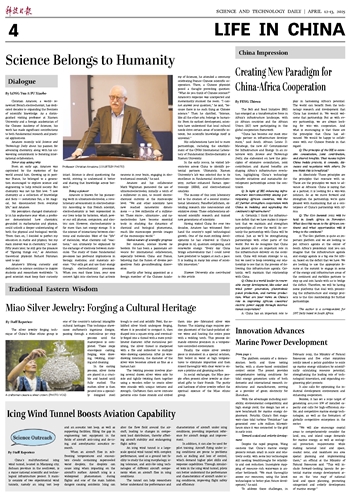
 |
| A craftsman cleans a silver crown. (PHOTO: VCG) |
The silver jewelry forging technique of China's Miao ethnic group is one of the country's national intangible cultural heritages. This technique showcases craftsmen's ingenious designs, passing through a meticulous 30-step process until the masterpiece is completed. These steps encompass casting, forging, wire drawing, twisting, inlaying and cleaning.
In the casting process, silver items are placed in a crucible and heated until fully melted. The molten silver is then poured into a specially designed steel trough to cool and solidify. Next, the solidified silver block undergoes forging, where it is pounded to compact it, then shaped into a square strip, and eventually forged into a thread with a mere 3-millimeter diameter. After meticulous polishing, the silver thread is sharpened with a file and subjected to multiple wire-drawing operations. After 52 wire-drawing iterations, the diameter of the silver wire becomes almost as fine as a human hair.
The twisting process involves placing several drawn silver wires side by side and tightly twisting them together using a wooden roller to create silver wire strands with unique textures and strength. Craftsmen then carve intricate patterns onto these strands and embed them into pre-fabricated silver wire frames. The inlaying stage requires precise placement of the hand-polished silver wires and heating the entire piece with a welding torch. This process demands extreme precision in a temperature-controlled environment.
Finally, the entire silver jewelry piece is immersed in a special solution, first boiled in water at high temperatures to eliminate impurities and then rinsed thoroughly with clear water to ensure a pristine and gleaming surface.
In social exchanges, the Miao people often present silver jewelry as cherished gifts to their friends. The purity and hardness of silver jewelry reflect the spiritual essence of the Miao ethnic group.







